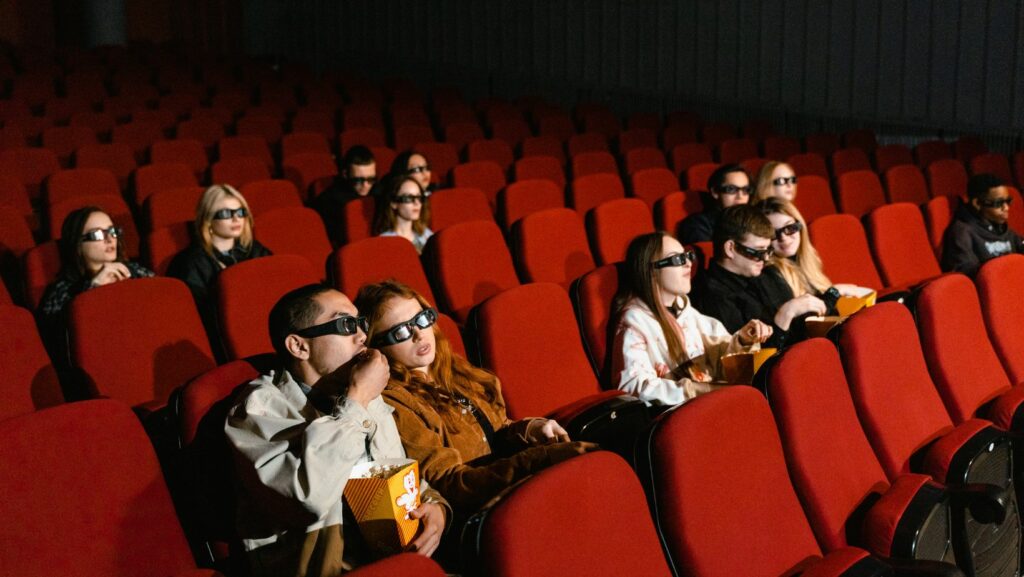Future of Film Industry
The film industry stands on the brink of a transformative era, driven by technological advancements and shifting audience preferences. As streaming platforms redefine how viewers consume content, traditional cinema faces both challenges and opportunities. The rise of virtual reality and artificial intelligence promises to reshape storytelling, offering immersive experiences that were once confined to the realm of science fiction.

Filmmakers are now exploring innovative ways to engage audiences, blending digital effects with authentic narratives. As the demand for diverse and inclusive stories grows, the industry must adapt to reflect the global tapestry of voices and perspectives. This evolution isn’t just about embracing new technologies; it’s about reimagining the very essence of cinema.
As the film industry navigates these changes, it must balance artistic integrity with commercial viability. The future of film is not just a continuation of what came before—it’s a bold redefinition, poised to captivate audiences in ways never imagined.
Technological Advancements
As the landscape of the film industry evolves, technology plays a pivotal role in shaping its future. Emerging tools and platforms continue to drive innovation in filmmaking processes and audience experiences.
Virtual Reality and Augmented Reality
Virtual reality (VR) and augmented reality (AR) enhance storytelling by immersing audiences in digital environments. Filmmakers use VR to create interactive narratives, allowing viewers to explore scenes from multiple perspectives. AR integrates digital elements into real-world settings, enriching live events and promotional activities. Companies like Oculus and Magic Leap are developing cutting-edge VR and AR technologies, creating new avenues for creative expression.
AI and Machine Learning
AI and machine learning streamline production by automating tasks such as script analysis and video editing. Algorithms process large datasets to identify trends and audience preferences, assisting in content personalization. For instance, IBM Watson aids filmmakers in generating trailers with AI-optimized scenes. Studios employ these technologies to predict box office performance and optimize marketing strategies, blending data-driven insights with creative instincts.
Impact of Streaming Services
Streaming services revolutionize film distribution by bringing diverse content to global audiences. Platforms like Netflix and Amazon Prime Video provide access to a vast library of films and series, shaping viewing habits. Their data-driven models empower filmmakers with analytics on viewer engagement, informing production decisions. Streaming expands opportunities for independent creators, enabling their work to reach broader audiences without traditional barriers.
Changes in Distribution Models
The film industry is undergoing significant changes in distribution models. Streaming platforms lead this transformation while traditional theaters face new challenges.
The Rise of Streaming Platforms

Streaming platforms have become a dominant force in film distribution. Services like Netflix and Amazon Prime Video offer instant access to vast libraries of content. This evolution allows audiences to enjoy films on-demand, breaking geographical and scheduling barriers. Streaming services provide filmmakers with analytical tools to understand viewer preferences which opens opportunities for niche genres and independent films to find audiences worldwide.
The Decline of Traditional Theaters
Traditional theaters witness a decline in audience numbers as streaming popularity grows. Many consumers favor the convenience of home viewing over theater visits. Factors like ticket prices and limited film availability contribute to this trend. Some theaters adapt by offering premium experiences and diversified content such as live performances or exclusive events to attract patrons. Theaters now focus on creating value-added experiences to compete with digital alternatives.
Innovations in Production Techniques
Emerging production techniques are redefining filmmaking, blending creativity with technology to enhance visual storytelling.

Digital sets and locations are transforming the production process. Filmmakers use advanced CGI (computer-generated imagery) to create detailed virtual environments, reducing the need for physical sets. Productions save costs and time by filming in these controlled digital spaces. Technology like Unreal Engine allows seamless integration of live-action footage with digital backgrounds, offering directors more creative control. Digital locations also provide flexibility in adjusting settings in post-production, enhancing aesthetic precision.
Filmmaking tools are advancing rapidly, offering new capabilities. Drones facilitate dynamic aerial shots, enriching storytelling with unique perspectives. 360-degree cameras capture immersive scenes, ideal for VR content and interactive experiences. Cloud-based editing platforms enable real-time collaboration among filmmakers, streamlining post-production processes. AI-powered software aids in color correction and scene analysis, improving quality and consistency. These tools empower creators to push the boundaries of traditional filmmaking, resulting in more engaging and innovative films.

